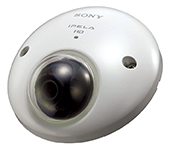
New surveillance technology helps bus operators better protect drivers and passengers
By John Recesso
Most bus operators have invested heavily in video security for facilities such as terminals, stations and infrastructure. However, far fewer have taken the next step and installed video cameras on board buses in order to protect drivers and passengers on active routes.
A case in point is the Utah Transit Authority (UTA), which provides bus and rail service primarily in Salt Lake City and the surrounding area. While UTA already has some cameras on trains and platforms, the agency announced in May that it is installing cameras on every bus it operates. UTA thinks the $2.5 million investment will save the agency money in the long run, by cutting down on insurance claims and helping the police solve crimes. Likewise, the Massachusetts Bay Transportation Authority (MBTA) started installing security cameras on its buses earlier this year. The $6.9 million project is funded by a grant from the Department of Homeland Security.
Onboard surveillance is a trend that has been gaining momentum in recent years, particularly as camera technology has dramatically improved. Moving buses were once considered one of the most difficult environments for IP surveillance cameras. For instance, a bus rattling along its route resulted in shaky, unusable video. In addition, rapidly changing lighting conditions – such as a bus entering or exiting a tunnel, or headlights shining into windows at night – wreaked havoc on video quality. Remote access to video has also been an issue. Operators traditionally used onboard recording devices, which greatly limited the video’s usefulness in active emergency scenarios because it could not be remotely viewed. Thankfully, the surveillance industry has been addressing all of these challenges in recent years, and now onboard surveillance is now more practical than ever. The primary camera technology advances that bus operators should consider for current and future installations are:
• Image stabilization
New image stabilization technologies reduce the impact of camera shake in moving buses, resulting in less blurry, more usable video. This makes it easier to identify people of interest and their unique features.
There are various ways IP cameras compensate for shaking, and small form-factor cameras – like those typically used on buses – often use software to stabilize the movement of the pixels and provide smooth video.
• Wide Dynamic Range (WDR)
WDR improves image quality for security cameras operating in difficult lighting conditions. In terms of surveillance, poor lighting can be defined as dim light, such as nighttime conditions; bright light, such as sun shining directly into a window; or rapidly changing light from external factors like tunnels or headlights. WDR technology allows clear images to be seen in light and dark areas simultaneously, rather than overexposing or underexposing various areas of the scene. This makes the video more usable in a wide range of circumstances.

While this technology prevents video from being too dark or too washed out, it is important to note that the security industry currently does not have any standards for WDR, and it can generally range from a low of 60dB to a high of 130dB. With as many as 70dB separating vendors, bus operators need to field test various camera models in order to find which one best meets their requirements.
• Mobile Capabilities & SD Card Support
Mobile capabilities and SD card support are important because they have changed the way video can be stored and viewed from onboard buses. Mobile network capabilities allow video to be sent to a remote site for viewing and storage. For example, the MBTA is using cameras that can stream live video over a 4G LTE network. This allows MBTA staff to watch bus activity in real time from a bus control center. MBTA Transit Police officers can also access the video from inside their cruisers.
SD card support reduces the need for bulky onboard video recorders because video can be stored directly on the camera. In addition, if the bus goes out of the mobile network’s range, video is recorded to the SD card and then streamed back to a command center once the bus is within the mobile network’s coverage area.
• Audio Support
Audio is not new to IP cameras or the surveillance industry, but it is a relatively new development for onboard surveillance. Today, cameras can be equipped with microphones that capture sound along with video and transmit the audio feed back to control centers. This can be helpful in verifying witness testimony or identifying the root of a problem. For example, did a fight break out because the aggressor was verbally assaulted first? Video alone does not always tell the whole story, so audio can be critical in filling in the gaps.
With all of these advances in IP camera technology, we expect that the trend of onboard surveillance is one that will only continue to grow.
John Recesso is a strategic business development manager with Sony Electronics’ Security Systems Division. He leads the division’s initiatives within the mass transit market.
